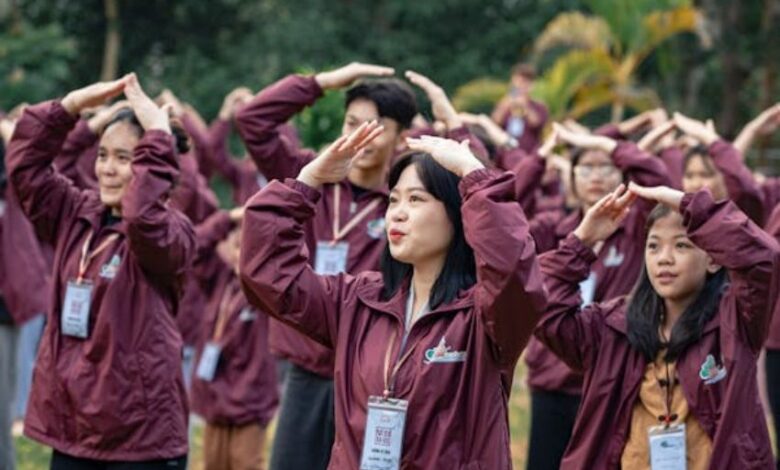Unmasking the Illusion: What is “The Human Gathering Fake”?

In a world increasingly dominated by digital technology and social media, the line between reality and illusion can often blur. One of the most striking examples of this phenomenon is what has come to be known as “The Human Gathering Fake.” This term refers to the creation of staged or completely artificial events that are designed to appear as genuine social gatherings. These fakes are often used to manipulate public perception, sway opinions, and create the illusion of widespread support or opposition. Understanding this concept is crucial in today’s media landscape, where misinformation can easily spread like wildfire.
Understanding “The Human Gathering Fake”
What is “The Human Gathering Fake”?
At its core, “The Human Gathering Fake” is an event or gathering that is either entirely fabricated or heavily manipulated to appear larger or more significant than it actually is. These events can be created using digital tools like CGI or augmented reality, where non-existent crowds are inserted into scenes, or through more traditional means, such as hiring actors to pose as participants. The objective is to deceive the audience into believing that the event is authentic and that there is substantial support or opposition for a particular cause or product.
Historical Context of Fake Gatherings
The concept of fake gatherings is not new. Throughout history, such tactics have been employed in propaganda, particularly during times of war or political unrest. Governments and political groups have used staged rallies or protests to convey a message of overwhelming support or dissent. These historical instances were often aimed at bolstering the morale of a nation or discrediting the opposition. However, with the advent of modern technology, the scale and sophistication of these deceptions have reached new heights, making it increasingly difficult for the average person to discern what is real and what is not.
The Mechanics Behind the Deception
Digital Technology and Fake Gatherings
In the digital age, creating fake gatherings has become easier than ever. Advanced software allows for the realistic simulation of crowds in virtual environments, often indistinguishable from real humans. This technology is commonly used in movies and video games but has also found its way into the realm of social media and news. For example, a video may be doctored to show thousands of people attending a rally, when in reality, only a handful were present. These digitally manipulated images and videos can then be shared widely on social media, leading to the rapid spread of misinformation.
Physical Staging Techniques
Beyond digital manipulation, there are also physical methods used to create fake gatherings. Agencies can organize groups of paid participants to attend events, such as protests or product launches, giving the false impression of genuine community support or enthusiasm. These staged events are often carefully choreographed to maximize their impact on both attendees and viewers. The result is a convincing display that can easily be mistaken for an authentic grassroots movement.
The Impact of “The Human Gathering Fake”
Influence on Public Opinion
One of the most significant consequences of “The Human Gathering Fake” is its potential to influence public opinion. When people see what appears to be a large group of individuals supporting a cause, they are more likely to believe that the cause is just or popular. This can lead to a bandwagon effect, where others join the movement simply because they perceive it to be widely accepted. On the flip side, fake gatherings can also be used to discredit or diminish the perceived support for opposing viewpoints, leading to a skewed understanding of public sentiment.
Erosion of Trust
The prevalence of fake gatherings can also erode trust in media and public institutions. As more people become aware of these deceptions, they may start to question the authenticity of all events reported in the news or shared on social media. This skepticism can lead to a general distrust in information, making it harder for legitimate causes to gain the support they need. Additionally, when fake gatherings are exposed, the backlash can be severe, leading to further polarization and division within society.
Case Studies and Real-World Examples
Political Manipulation
In the realm of politics, “The Human Gathering Fake” has been used to create the illusion of popular support for candidates or policies. For instance, during election campaigns, some political groups have been caught staging rallies with hired participants to make it appear as though their candidate has overwhelming support. These events are often broadcast on news channels and shared on social media, creating a false narrative that can influence voters.
Marketing and Public Relations
Businesses have also employed fake gatherings as part of their marketing strategies. By staging product launches or promotional events with paid attendees, companies can create a buzz around their products that would not exist otherwise. This manufactured hype can lead to increased media coverage and social media engagement, ultimately driving sales. However, these tactics can backfire if the public discovers the deception, leading to a loss of credibility and trust.
Ethical and Legal Considerations
The Ethics of Deception
The use of fake gatherings raises significant ethical concerns. While some may argue that these tactics are simply another form of marketing or public relations, others contend that they are fundamentally dishonest and manipulative. Deceiving the public, whether for political, commercial, or social purposes, undermines the integrity of public discourse and can have far-reaching consequences for society.
Legal Implications
From a legal perspective, the use of fake gatherings may not always be explicitly illegal, but it can fall into a grey area that intersects with laws against fraud, false advertising, and defamation. In some jurisdictions, staging a fake event with the intent to deceive the public could lead to legal action, especially if it results in financial or reputational harm to individuals or organizations.
Conclusion: Navigating a World of Deception
In a world where “The Human Gathering Fake” is becoming increasingly common, it is essential to develop the skills and tools needed to navigate this landscape. Media literacy, critical thinking, and skepticism are crucial in discerning truth from fiction. By questioning the authenticity of what we see and hear, and by seeking out multiple sources of information, we can protect ourselves from being misled by deceptive practices. Ultimately, fostering a culture of transparency and honesty is key to ensuring that public discourse remains grounded in reality, rather than in manufactured illusions.



